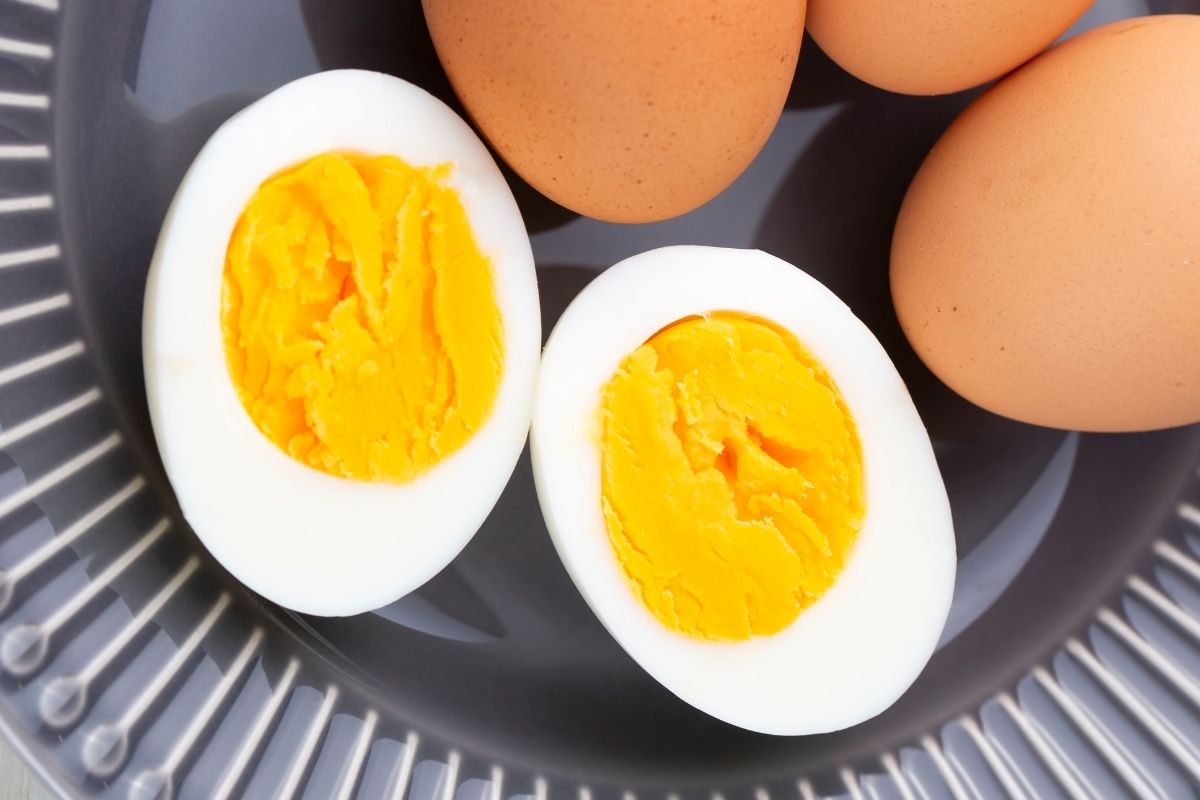
A groundbreaking study reveals the secret to getting both firm whites and creamy yolks – no compromises needed!
TL;DR
Scientists discovered that alternating an egg between boiling and 30°C (86°F) water (2 minutes each) for 32 minutes total creates the perfect boiled egg – firm whites and creamy yolk. The method also better preserves nutrients like polyphenols and amino acids compared to traditional cooking.
The Egg Dilemma
Here’s the problem we’ve all faced: when you boil an egg, you’re trying to please two very different parts. The white needs to be fully set (which happens at about 85°C/185°F), while the yolk is at its creamy best at a lower temperature (around 65°C/150°F). It’s like trying to cook for a picky eater and a foodie at the same time!
Until now, we’ve had to compromise. Hard-boiled? You get firm whites but chalky yolks. Soft-boiled? Often leaves you with runny whites. And that fancy sous vide method everyone’s been talking about? Great yolks, but the whites never quite set right.
The Game-Changing Solution
A team of Italian researchers came up with a brilliantly simple solution: just bounce your egg back and forth between hot and cold water. They call it “periodic cooking,” and it’s revolutionizing the humble boiled egg.
Here’s How to Do It:
- Get two pots of water ready:
- One boiling (100°C/212°F)
- One maintained at exactly 30°C/86°F (use low heat or add occasional ice cubes to maintain temperature)
- The Dance of the Egg:
- 2 minutes in the boiling water
- 2 minutes in the 30°C water
- Repeat 8 times (total time: 32 minutes)
Why It Works
This isn’t just kitchen magic – it’s science! The hot dips cook the white perfectly, while the cool dips keep the yolk from overcooking. The result? An egg with perfectly set whites and a gorgeously creamy yolk. No more green rings, no more rubber-band textures, and no more disappointment when you cut it open.
But Wait, There’s More!
The researchers didn’t just stop at texture. Their analysis showed that this gentle back-and-forth method actually preserves more of the egg’s nutrients than traditional boiling. Specifically, they found higher levels of beneficial compounds called polyphenols in the yolk, along with better preservation of important amino acids. It’s like getting a bonus health boost with your breakfast!
Tips for Success
- Start with room-temperature eggs
- Keep your water temperatures steady
- Be gentle when moving the egg between pots
- Give it a quick cool-down at the end
- Be patient – great eggs take time!
Is It Worth the Extra Time?
Look, 32 minutes might seem like a long time for a boiled egg. But if you’re serious about your brunch game or just want to treat yourself to the perfect egg, this method is worth every minute. Plus, you can always prep other things while your egg does its hot-cold dance!
The Bottom Line
Sometimes the best solutions aren’t about compromising – they’re about thinking differently. This method proves that even something as simple as boiling an egg can be improved with a little scientific creativity.
Ready to try it? Your perfect egg awaits. Just remember to be careful with those water transfers – nobody wants a scalded hand with their breakfast!
More Egg-cellent Reading
Love eggs as much as we do? While you’re perfecting your periodic-cooking technique, check out these other egg-tastic topics:
Health & Nutrition
Eggs are one of the best sources of lean protein available, but is it healthy to eat eggs every day? The latest research might surprise you!
Recipe Inspiration
Start your day right with these protein-packed favorites:
Seasonal Fun
Planning for Easter? Learn how to Create Beautiful Easter Eggs With Silk Ties or Scarves for a unique twist on traditional dyeing methods.
Sources & Further Reading
Original Research Paper
Research Details
- Institution: University of Naples Federico II and the National Research Council of Italy
- Funding: Italian Ministry for Universities and Research (PRIN 2022 programme, project No. 2022SFF349 “4D Printing of smart soft robotics”)
Key Temperature Facts
- Egg white (albumen) optimal setting temperature: 85°C (185°F)
- Egg yolk optimal temperature: 65°C (150°F)
- Hot water temperature: 100°C (212°F)
- Cold water temperature: 30°C (86°F)
Cooking Times Compared
- Traditional hard-boiled: 12 minutes
- Soft-boiled: 6 minutes
- Sous vide: 1 hour at 65°C (150°F)
- New periodic method: 32 minutes total (8 cycles of 2 min hot/2 min cold)
Related Research
Original Research Paper: “Periodic cooking of eggs” published in Communications Engineering (2025).
Related Research: “Culinary Biophysics: On the Nature of the 6X°C Egg” by César Vega and Ruben Mercadé-Prieto, published in Food Biophysics (2011).
Thermally Induced Changes in Egg White Proteins: “Thermally Induced Changes in Egg White Proteins” by Y. Mine, T. Noutomi, and N. Haga, published in Journal of Agricultural and Food Chemistry (1990).
Remember: While we’ve made every effort to ensure accuracy, you should always refer to the original research paper for the most detailed and up-to-date information.
https://onbetterliving.com/wp-content/uploads/2025/02/The-perfect-hard-boiled-egg.jpg
2025-02-24 09:30:14